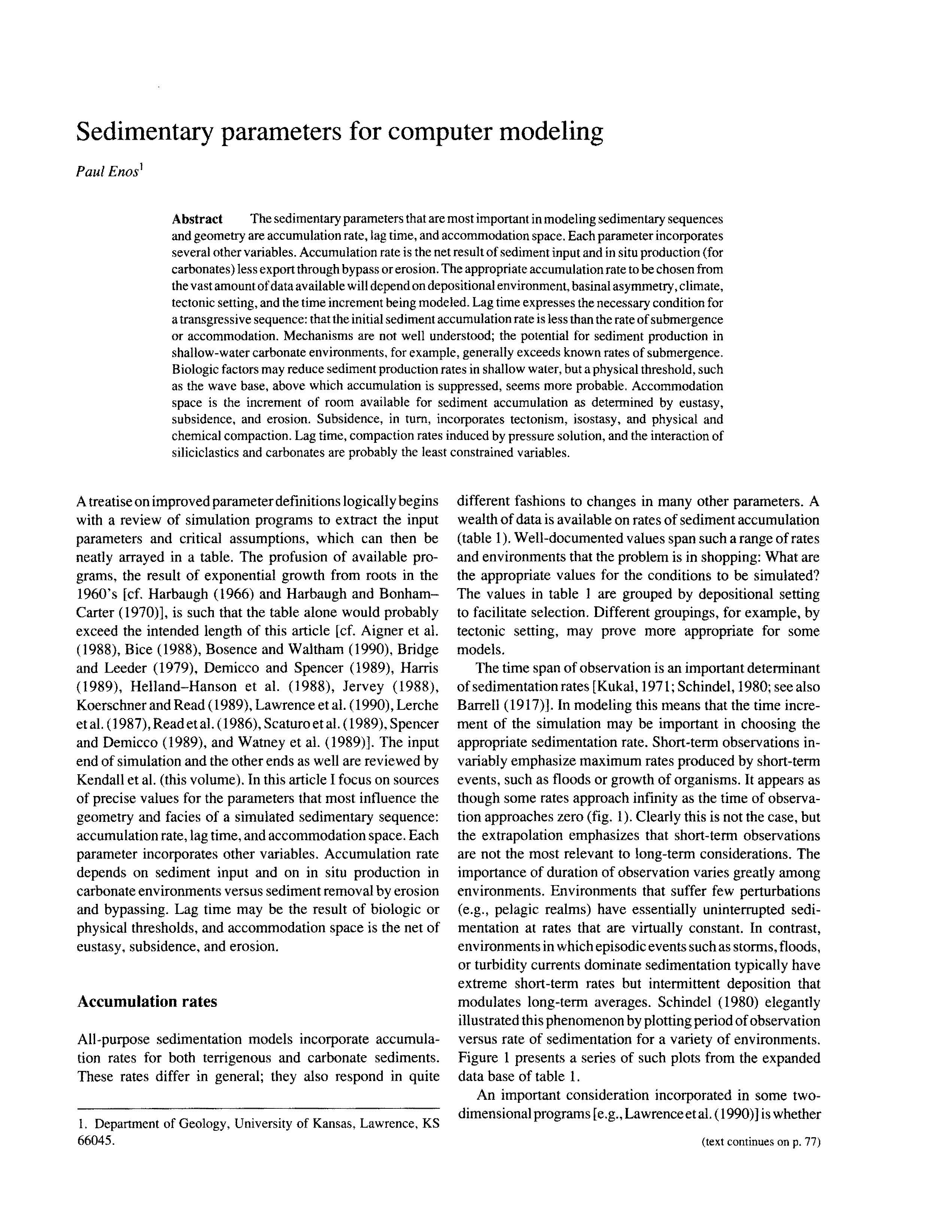Sedimentary parameters for computer modeling
DOI:
https://doi.org/10.17161/kgsbulletin.no.233.20449Abstract
The sedimentary parameters that are most important in modeling sedimentary sequences and geometry are accumulation rate, lag time, and accommodation space. Each parameter incorporates several other variables. Accumulation rate is the net result of sediment input and in situ production (for carbonates) less export through bypass or erosion. The appropriate accumulation rate to be chosen from the vast amount of data available will depend on depositional environment, basinal asymmetry, climate, tectonic setting, and the time increment being modeled. Lag time expresses the necessary condition for a transgressive sequence: that the initial sediment accumulation rate is less than the rate of submergence or accommodation. Mechanisms are not well understood; the potential for sediment production in shallow-water carbonate environments, for example, generally exceeds known rates of submergence. Biologic factors may reduce sediment production rates in shallow water, but a physical threshold, such as the wave base, above which accumulation is suppressed, seems more probable. Accommodation space is the increment of room available for sediment accumulation as determined by eustasy, subsidence, and erosion. Subsidence, in turn, incorporates tectonism, isostasy, and physical and chemical compaction. Lag time, compaction rates induced by pressure solution, and the interaction of siliciclastics and carbonates are probably the least constrained variables.
Downloads

